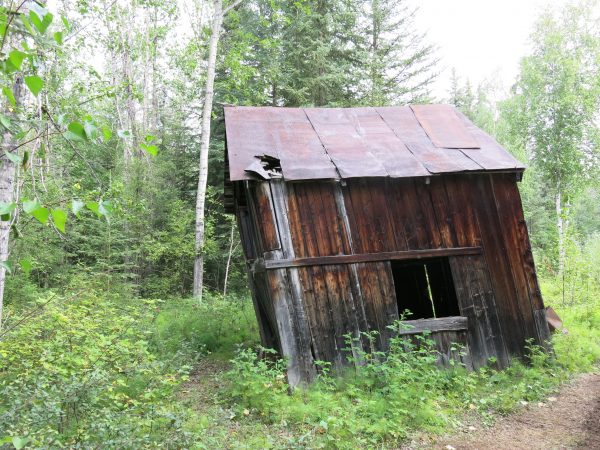Alaska structures crumble without us
May 31, 2018
Ned Rozell
907-474-7468

In Alan Weisman’s book, “The World Without Us,” the author ponders “a world from which we all suddenly vanished. Tomorrow.”
In his thought experiment, Weisman travels around the world to explore that question, revealing that cockroaches and bedbugs would not fare well without our sloppiness and warmth, but Theodore Roosevelt’s granite face will stare down from Mount Rushmore for the next 7.2 million years.
Weisman devotes a chapter to buildings, going into detail on their natural, gradual destruction. It all begins with water, Weisman writes, quoting a farmer who said a sure way to destroy a barn is to cut an 18-inch hole in its roof.
Posed with the question of the fate of Alaska structures without us, researchers with the Cold Climate Housing Research Center in Fairbanks agreed that the liquid stuff of life is the most powerful agent of demise.
The research center’s Ilya Benesch has witnessed the slow and interesting fade of a mining building in Poorman, Alaska, which benefited from a still-intact tin roof. Built in the early 1900s, the structure, about 70 miles south of Ruby, was still in decent shape about 75 years later.
“Inside, tools were still on the shelves, (as were) duplicate and triplicate spare parts and rebuild sets for a lot of the equipment they used,” he said. “The biggest issue was bears and porcupines that broke in and started making a mess of things.”
Most other structures, even those in the dry and cold interior of Alaska, where decomposition is on hold for half the year, don’t fare so well.
“The old town of Chatanika (about 25 miles north of Fairbanks) was vibrant and occupied up into the 1930s, and there is almost nothing left,” said Robbin Garber-Slaght, the center’s product testing lab engineer. “The camp that covered the whole hill is gone.”
She and others at the center noted that in an extreme climate like ours, water eats a building from the inside as well as the outside.
The problem would start as soon as power stations run out of coal or diesel or natural gas and there’s no one there to feed them. Dropping temperatures within buildings would then freeze pipes, water tanks and bottles of apple juice. The expansion of those frozen liquids liberates them from containers, and there the problems start, said research engineer Bruno Grunau.
“The spring thaw would ease these liquids right onto the floor of your home, hastening rot of the structure, and beginning the gently accelerating path toward decomposition,” he said.
The longevity of Alaska buildings depends largely upon the materials builders used, said Aaron Cooke, an architectural designer who grew up in Alaska and works with the Technical University of Denmark.
“Organic stuff goes first,” he said. “Metals rust second, and ceramics last the longest. Except for maybe stainless steel.
“In Shaktoolik, which is prone to violent storms, the old village school (circa 1940) had its wooden body obliterated,” he said. “The concrete foundation remains.”
Some people think concrete is less enduring in the North, but it holds up for a long time when a building is not heated, Cooke said.
“As soon as they go cold, they can't damage the ground anymore (by warming the permafrost), which means that they can't damage themselves (by wrecking their foundations). Ironically, there are some buildings in the high Arctic that would last far longer without us in them.”
Since the late 1970s, the University of Alaska Fairbanks Geophysical Institute has provided this column free in cooperation with the UAF research community. Ned Rozell is a science writer for the Geophysical Institute. A version of this column appeared in 2011.


